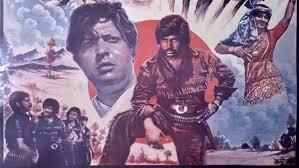India’s gangster film genre, often referred to as “Bombay Noir,” has captivated audiences with its portrayal of crime, ambition, and moral ambiguity. From the early days of Bollywood to contemporary streaming platforms, these films have evolved, reflecting societal changes and cinematic innovations.
The Origins of Bombay Noir
Bombay Noir is the name for the kind of Indian cinema which mingles classic black and white Noir visual style with the unique socio-cultural aspects of Mumbai. A festival in the Tel Aviv Cinematheque that focuses on films of the 1950s, such as Baazi (1951), offers the audiences a chance to experience the low crime and heavy moral themed storytelling. These early movies set the seeds for what became a genre that would develop into India’s dark underbelly-urban tale.(The New Yorker, CrimeReads)
The Rise of the ‘Angry Young Man’
There was a dramatic change in the 1970s with India’s Method-influenced cinema that used the city as setting for crime, violence, and heroism with the action film, the “angry young man” film which are highlighted by Mumbai films such as Zanjeer (1973) and Deewaar (1975) with Amitabh Bachchan. Written by the Salim-Javed duo, these films depicted heroic characters that fought against villainy and other moral dilemmas, with the stronger centralized theme of the movie sitting on the convergence between good and evil with the powerful positive character living together in the world of negative, either amid the corrupt, as in Deewaar, or with it, as in Trishul. The era was characterised by socio-economic upheaval which tapped into that and for many struck a nerve.(Wikipedia)
Realism and the Mumbai Underworld
The late 1990s and early 2000s saw a move towards more realistic portrayals of crime, influenced by real-life events and figures. Ram Gopal Varma’s Satya (1998) and Company (2002) delved into the intricacies of Mumbai’s underworld, offering gritty narratives that departed from the glamorized depictions of earlier films. These films highlighted the complexities of organized crime and its impact on society.(Wikipedia)
Notable Films in the Genre
- Satya (1998): A seminal work that redefined the gangster genre in Indian cinema.
- Company (2002): Explores the dynamics of power and betrayal within the criminal underworld.
- Gangs of Wasseypur (2012): An epic saga that chronicles the rise and fall of coal mafia families in Bihar.
- Sacred Games (2018): A Netflix series that intertwines crime, politics, and religion in modern-day Mumbai.
The Role of Streaming Platforms
The advent of streaming services like Netflix has provided a new platform for Indian gangster narratives. Sacred Games (2018) stands out as a prime example, offering a complex, multi-layered story that delves into the depths of Mumbai’s criminal world. The series has been praised for its storytelling, character development, and production quality.(The New Yorker)
The Future of the Genre
As Indian cinema continues to evolve, the gangster genre remains a fertile ground for storytelling. With advancements in technology and a growing appetite for nuanced narratives, future films are likely to explore new dimensions of crime and morality, reflecting the changing dynamics of Indian society.
India’s gangster film genre has undergone a remarkable transformation, from its noir beginnings to the complex narratives of today. These films not only entertain but also offer a lens through which to examine societal issues, making them an integral part of India’s cinematic landscape.
Frequently Asked Questions (FAQ)
Q1: What defines the Bombay Noir genre?
A: Bombay Noir combines the stylistic elements of classic film noir with Indian cultural and social contexts, focusing on crime, moral ambiguity, and complex characters.
Q2: Which film marked the beginning of the ‘angry young man’ era?
A: Zanjeer (1973) introduced the ‘angry young man’ archetype, with Amitabh Bachchan portraying a cop battling corruption.(Wikipedia)
Q3: Are there any Indian gangster films based on real events?
A: Yes, films like Black Friday (2004) and Once Upon a Time in Mumbaai (2010) are inspired by real-life events and figures from Mumbai’s underworld.(Wikipedia)
Q4: How have streaming platforms influenced the genre?
A: Streaming platforms have allowed for more experimental and in-depth storytelling, as seen in series like Sacred Games, which offers a layered narrative exploring various facets of crime and society.(Vogue)
Q5: What is the significance of Gangs of Wasseypur in Indian cinema?
A: Gangs of Wasseypur is notable for its epic storytelling, complex characters, and realistic portrayal of crime, marking a high point in the evolution of the gangster genre in Indian cinema.(Reddit)